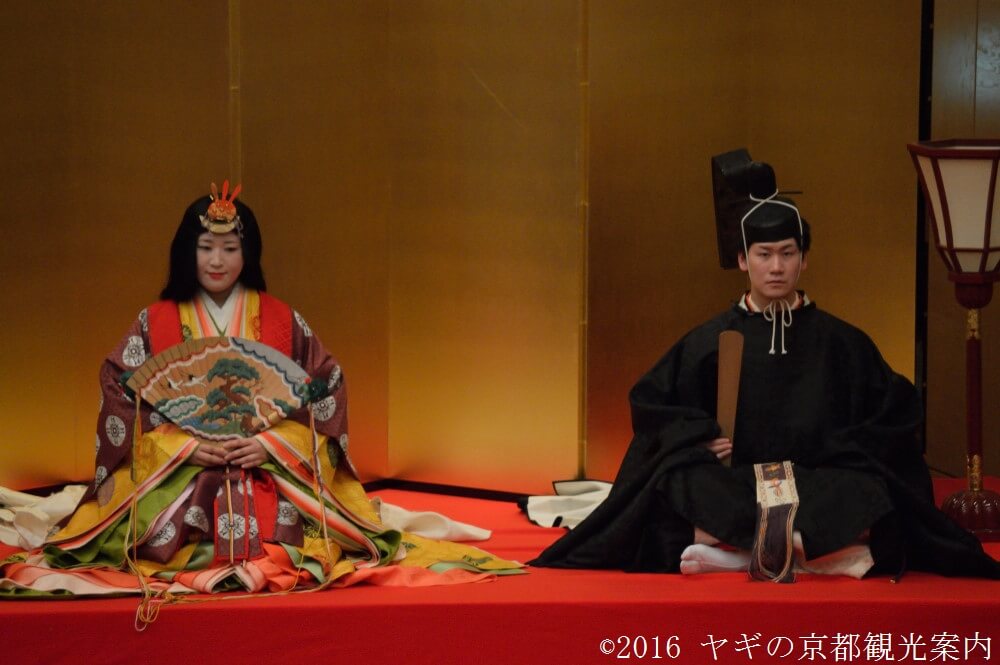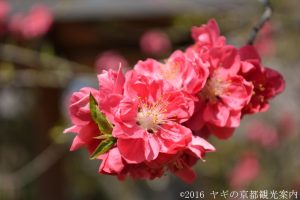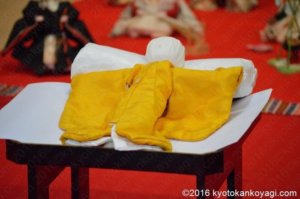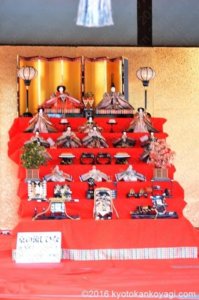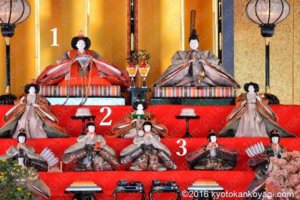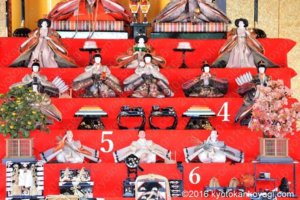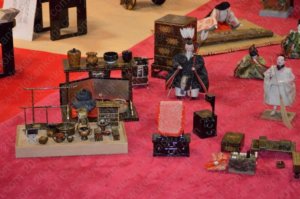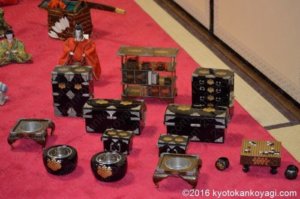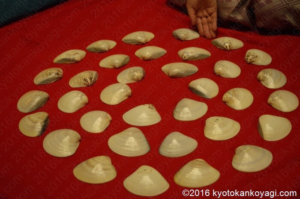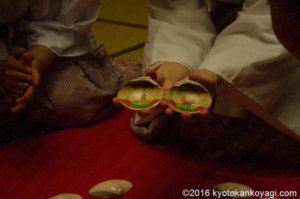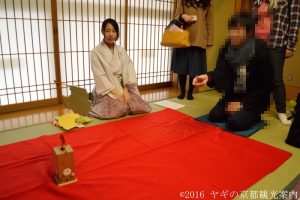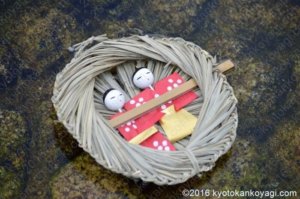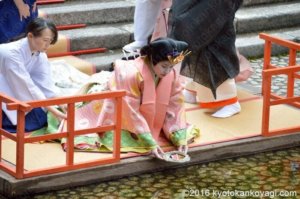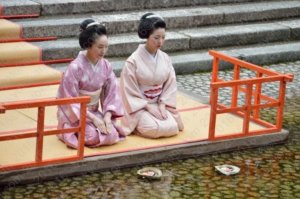What is Hinamatsuri?
Hinamatsuri is one of “Gosseku,” the annual events, and held on March 3rd in Japan. Each family which has young girls displays “Hina Nigyo” dolls with flowers like Japanese plum for the purpose of praying for prosperous and healthy life for the ladies.
Gosekku 五節句
The word Gosekku means “five Sekku.” Sekku means a day between seasons in the ancient Japanese lunar calendar. Under the influence of ancient Chinese yin-yang philosophy, the Imperial court held “Sechie” to took away evil spirits and prayed for prosperous life. In Edo period, the Tokugawa Shogunate approved five Sechie as five Sekku, or Gosekku: Jinjitsu no Sekku (Jan. 7th), Johshi no Sekku (Mar. 3rd), Tango no Sekku (May 5th), Sichiseki no Sekku (July 7th), and Choyo no Sekku (Sep. 9th).
Hinamatsuri is held on March 3rd and is Joshi no Sekku. March in Japanese lunar calendar means April in Gregorian calendar. In April, Momo (plum/peach) flower is in bloom. Ancient people thought Momo kept anything evil away from us, prosperity and healty life. So, Joshi no Sekku gradually was begun to be referred as “Momo no Sekku.”
The short history of Hinamatsuri ひな祭りの歴史
The origin
No one can tell when Hinamatsuri began exactly but it is believed that the origins of it is “Hina Asobi,” “Nagashi bina,” and “Amagatsu.”
Hina Asobi dates back to Heian Period (794-1192). In the period, young daughters of court nobles and aristocrats played with some kind of doll house. This play was called “Hina Asobi.”
At the same time, people had a ritual on March 3rd. It was “Joshi no Nagashi bina.” In the ritual, people put evil things inside of them on a human-shaped piece of paper named “Hitogata” and let it go away on a stream. (In the latter part of the video, you can see the lady does the same thing.)

The lady in the video is Saiohdai of Aoi Matsuri.

In addition to it, children of court nobles and aristocrats had a doll named “Amagatsu.” Their parents gave them it to take on misfortunes for their daughters’ and sons’ sake.

Nagashi bina is a kind of Harae on Japanese mythology.


It is assumed that these three fused and made Hinamatsuri in Azuchi Momoyama period (1573 – 1603).
Hina Ningyo Dolls おひなさま/雛人形
Overview
Sometimes, Hinamatsuri is equivalent to Hina Ningyo dolls. In early days, Hina Ningo means only a pair of dolls. Today, though it consists of many dolls. The set of dolls is typical Hina Ningyo. It is called Nanadan Kazari, or Jugonin Kazari. 15 dolls are displayed in 7 steps of stairs. Seven is lucky number in Japan.
Dairibina 内裏雛
#1 in the photo. The left is Mebina (female Hina Ningyo) and the right is Onina (male Hina Ningyo). They means ususally crown princess and prince. They are at the top of red-carpeted stairs. The red carpet prevents us from bad luck.
Sannin Kanjo 三人官女
#2 in the photo. They are court ladies and in front of the Dairibina. They teaches lady ought to learn: Waka, ancient Chinese poem, behavior, and so on.
Gonin Bayashi 五人囃子
#3 in the photo. They are musicians to play Noh music with the traditional musical instruments they have to cheer up life of lady. They are in front of Sanin Kanjo.
Zuishin 随身
#4 in the photo. They are guardians and in front of Gonin Bayashi.
Sicho 仕丁
#5 in the photo. They keep anything tidy with blooms and dustpans they have. They are in front of Zuishin.
Others
#6 in the photo. Luxurious set of Hina Ningyo has many other dolls and pieces.
The place we can enjoy Hinamatsuri festival
Ichihime shrine
Hiina Matsuri
So far, the schedule of 2025 is not announced.
- Date・・・3/3/2024
- @ Hito Machi Koryukan ひとまち交流館(The red alien in the map)
- Entrance fee 3,000 JPY 180 tickets are available
- 13:00~13:20 Lecture on Hina doll
- 13:30~14:00 Teaditional fun things to do: Kaiawase, Tosenkyo
- 14:00~14:40 Lecture on Kimono wearing
- 14:50~ Real Ohinasama and dance performances
- 16:00 Closing

Blue Torii is Ichihime shrine and the red alien is Hito Machi Koryukan.
Ichihime shrine is a special place for ladies. The Deities enshrined there are Munakata Sanjoshin. They keep them from misfortune. On March 3rd, it helds “Hiina matsuri.” In Hiina matsuri, we can see “Human Hina Ningyo,” music, and dance performance.
In addtiton to it, we can experience traditional Japanese games. The photo is “Kaiawase.” It is a game resembles concentration. A pair of shell of Hamaguri shellfish is in the same shape. Players find a pair and turn around. If we had a pair, we would see a pair of picture inside of them. There are Mebina and Obina in the shells in the photo.
We also can experience other games. You can’t under stand Japanese? Don’t worry, they are so simple and you can enjoy them without words!
How to get to Ichihime shrine?
Kyoto city bus: Shimogamo jinja mae/Demachiyanagi Eki mae bus stop
Keihan railways: Demachiyanagi station
About Ichihime shrine
- Address: Kawaramcajhi Gojo Sagaru Hitosujime Nishi Iru, Shimogyo ward, Kyoto, 600-8119
- Phone: 075-361-2775
- Website Ichihime shrine offcial (Japnese language)
- Opening hours 9:00~16:30
- Entrance fee: Free (Hiina Matsuri cost you 2000 yen.)
Simogamo shrine
Nagashi Bina
Shimogamo shrine is one of the oldest Sinto shrines in Kyoto. It holds famous Aoi matsuri festival. On March 3rd, it helds “Nagashi Bina.”
In Nagashibina, human Hina Ningyo, Maikosan, and kindergarten children do the same thing as Joshi no Nagashibina as described previously. Of course we also can experience the same thing!
How to get to Shimogamo shrine?
Kyoto city bus: Kawaramachi Gojyo/Kawaramachi Shomen bus stop.
About Shimogamo shrine
- Address: 59 Shimogamo Izumigawacho, Sakyo Ward, Kyoto, Kyoto Prefecture 606-0807
- Phone: 075-781-0010
- Website Shimogamo shrine official
- Opening hours 6:30~17:00
- Entrance fee: Free
ヤギの京都観光案内/KYOTO GOAT BLOGをもっと見る
購読すると最新の投稿がメールで送信されます。

